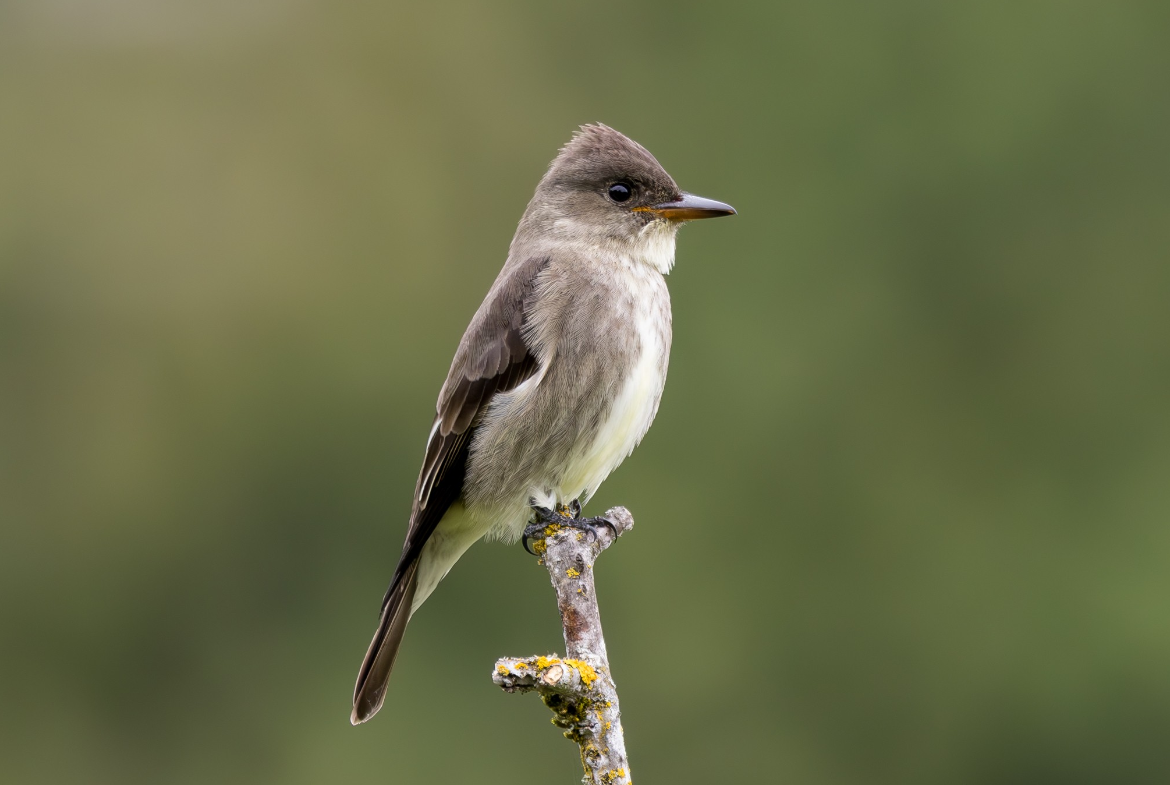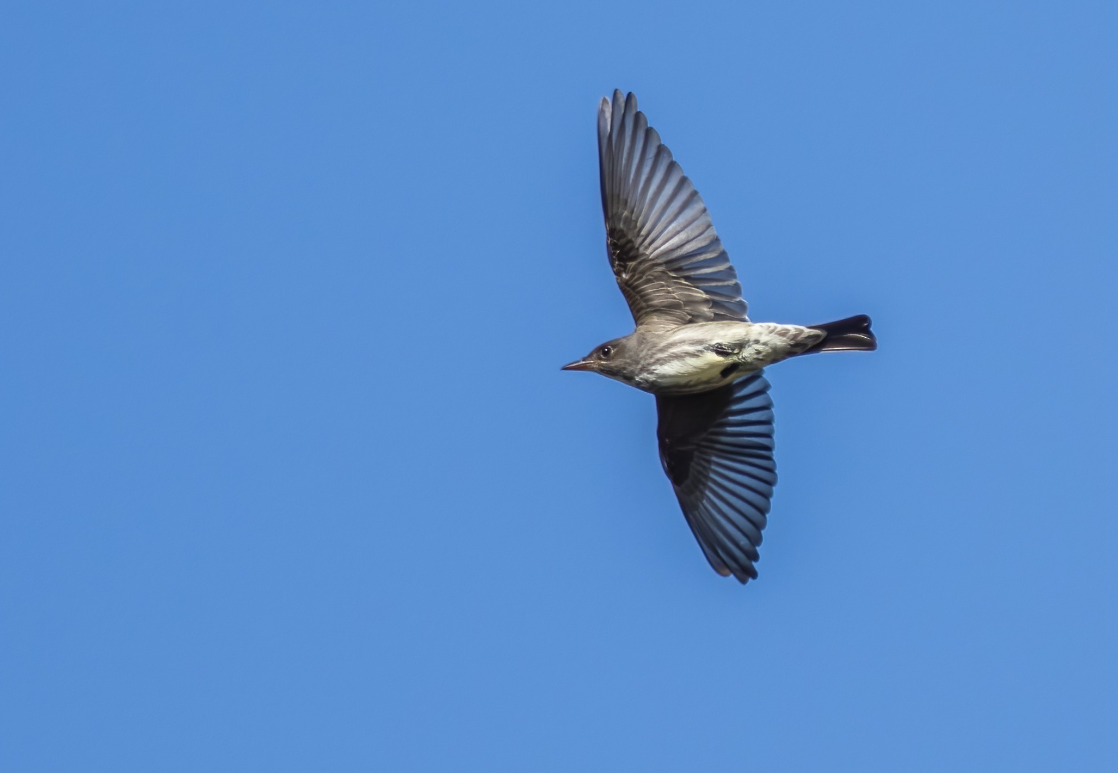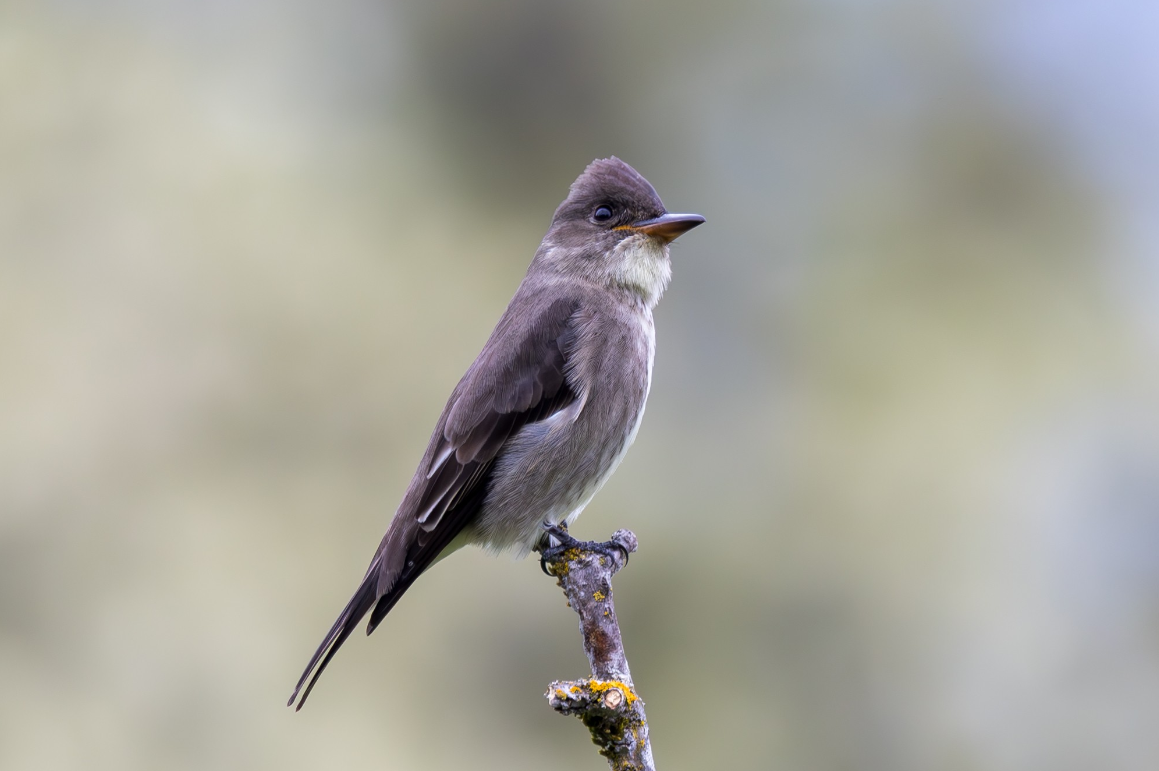By Jody Allair, Director of Community Engagement at Birds Canada

An Olive-Sided Flycatcher perches on a branch. Photo: Ian Burgess
They are the quintessential long-distance migratory songbird. Incredible journeys, tough-as-nails appearance, and beautifully regal even without the elaborate ornate coloring of their wood-warbler neighbours. And as much as I would love to wax poetic about how this well-postured denizen of Canada’s boreal forest represents Canada – it is in fact a bird that is shared across the hemisphere, with the majority of their time spent on migration and in their Central and South American post-breeding grounds.
There are many stories to be told here. Olive-sided Flycatchers tick all the conservation red flags – they’re an aerial insectivore (the fastest declining group of birds in Canada), they travel very long distances, and face numerous challenges ranging from climate change, habitat loss on breeding, post-breeding, and migratory stopover sites, windows, lights….the list could go on but the point has been made. This unheralded bird deals with a lot during its life.
We hope that by sharing stories of the Olive-sided Flycatcher throughout the year we can draw attention to the issues facing boreal birds, the importance of intact forested ecosystems in northern South America, and the issues facing all of our long-distance migratory birds.
But first, let’s get to know a little bit more about the Olive-sided Flycatcher.
Life History

An Olive-Sided Flycatcher in flight. Photo: Joachim Bertrands
These are impressive-looking birds. They’re medium-sized songbirds, 18-20 cm in length, and weigh 32-37 grams (about the same as a standard 60-watt lightbulb). Olive-sideds have a crested head shape, with long wings and a relatively short, and slightly forked, tail. They are dark olive-gray above with white underparts which contrast with their diagnostic brownish-gray streaked vest and sides. Other features that are often visible with closer looks include white patches on the sides of the rump, dark gray chevrons on their undertail coverts, and a very large dark bill that has an orange lower mandible.
From here they will watch for prey (generally large insects) and then suddenly swoop out (this feeding behavior is also known as sallying) to grab a flying insect and return to the same perch to scarf down lunch.

An Olive-Sided Flycatcher in its characteristic posture. Photo: Ian Burgess
- Their bills are so strong you can often here a loud SNAP when they grab an unsuspecting insect out of the air
- And speaking of insects—Bees are one of their preferred foods
- Olive-sided Flycatchers are actually a type of Pewee in the genus Contopus
- The oldest recorded Olive-sided Flycatcher was over 7 years old
I hope this will inspire you to get outside in 2024 and try and see our Avian Ambassador— the amazing Olive-sided Flycatcher, first hand. If you happen to live within the boreal region or the mountain forests of western Canada, look for them in those forest edge habitats throughout May and July. And here’s a great tip for those trying to find one on migration. In spring, Olive-sideds come through southern Canada fairly quickly. However, their fall migration is extremely protracted and starts in late July and early August. I often can find an Olive-sided Flycatcher during mid to late August at a local park or greenspace – especially if there are some nice tall conifers or snags to perch on.
Stay tuned for more stories, highlights, research, and more about this incredible bird, the Olive-sided Flycatcher throughout 2024!
QUICK, THREE BEERS!
